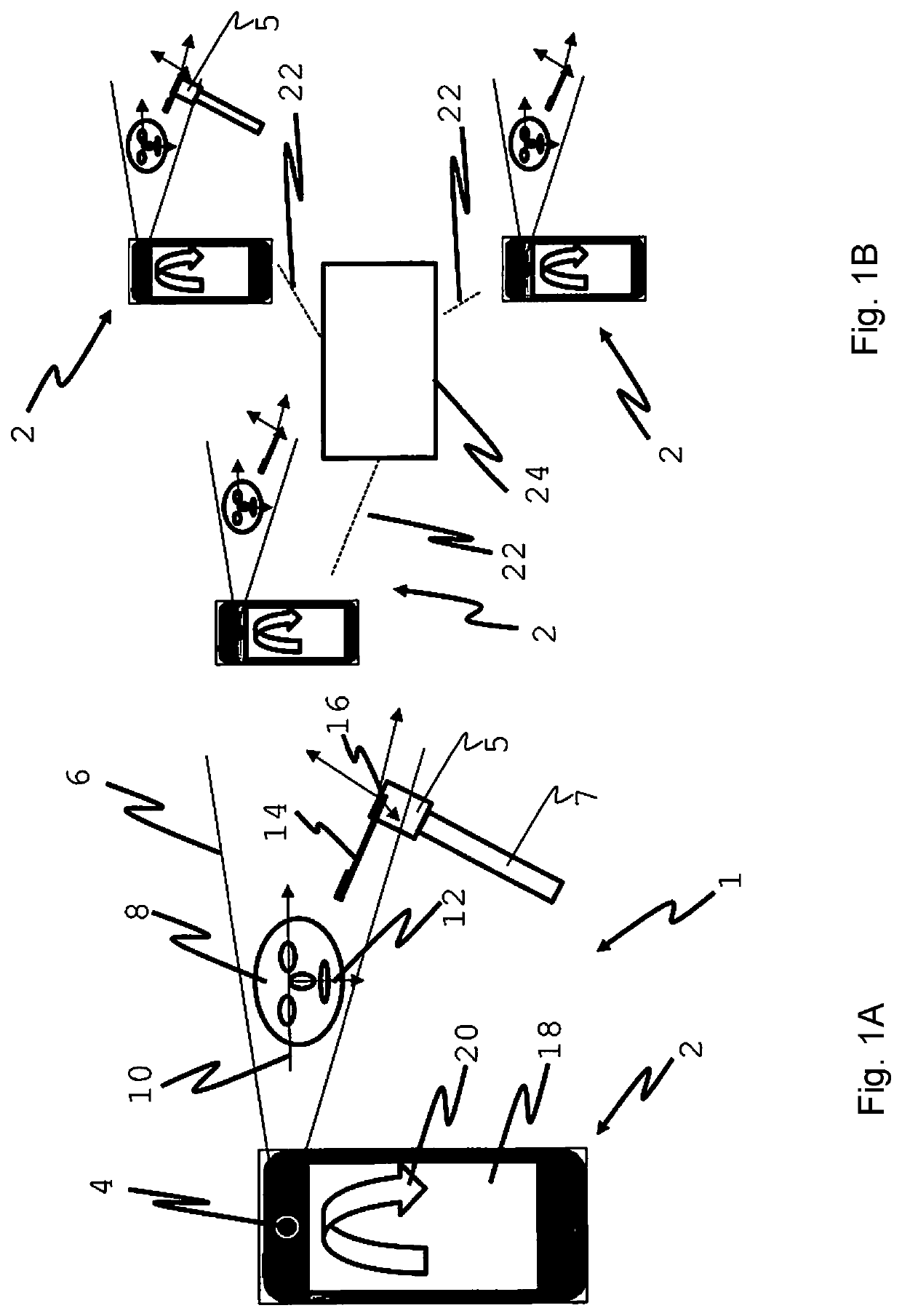Method for determining movement patterns during a dental treatment
a movement pattern and dental treatment technology, applied in the field of systems and methods for determining movement patterns during dental treatment, can solve the problems of deterioration of oral cavity, inability to optimally ensure oral hygiene, and easy forgetting, so as to facilitate control, facilitate optimization of oral health, and be convenient to us
- Summary
- Abstract
- Description
- Claims
- Application Information
AI Technical Summary
Benefits of technology
Problems solved by technology
Method used
Image
Examples
Embodiment Construction
[0090]In FIG. 1A, a system 1 for recording (capturing) dental treatment movements using a processor device 2 or a mobile end-user device 2 is shown. The mobile end-user device 2, which is preferably configured as a mobile phone, herein preferably has at least or exactly one optical detection device 4, such as an optical capturing device 4, that can be preferably formed as a camera. The camera preferably records (captures) exactly or more than 15 fps (frames per second), exactly, up to or more than 30 fps, exactly, up to or more than 45 fps, exactly, up to or more than 60 fps, exactly, up to or more than 75 fps, exactly, up to or more than 90 fps, exactly, up to or more than 120 fps or exactly, up to or more than 200 fps.
[0091]Reference number 6 denotes the recording (detection) area, in which preferably at least one part (portion) of the head, such as one or both pupils, the nose and / or the mouth, of a person 8 as well as at least one part (portion) of the hand 5 guiding the dental ...
PUM
 Login to View More
Login to View More Abstract
Description
Claims
Application Information
 Login to View More
Login to View More - R&D
- Intellectual Property
- Life Sciences
- Materials
- Tech Scout
- Unparalleled Data Quality
- Higher Quality Content
- 60% Fewer Hallucinations
Browse by: Latest US Patents, China's latest patents, Technical Efficacy Thesaurus, Application Domain, Technology Topic, Popular Technical Reports.
© 2025 PatSnap. All rights reserved.Legal|Privacy policy|Modern Slavery Act Transparency Statement|Sitemap|About US| Contact US: help@patsnap.com


